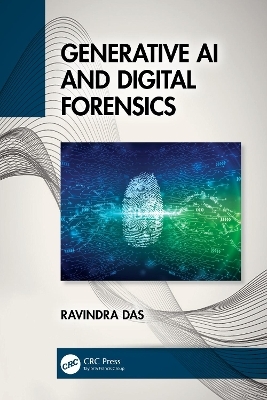
Generative AI and Digital Forensics
Seiten
2024
CRC Press (Verlag)
978-1-032-74486-5 (ISBN)
CRC Press (Verlag)
978-1-032-74486-5 (ISBN)
A key step here is to investigate how and why the security breach happened in the first place. The best to do this is through what is known as “Digital Forensics”. This is where specially trained Digital Forensics Investigators collect and comb through every piece of evidence to determine this.
In today’s world, cybersecurity attacks and security breaches are becoming the norm. Unfortunately, we are not immune to it, and any individual and entity is at dire risk. The best and only thing that we can do is to mitigate the risks as much as much as possible so that they do not happen at all. But even when a security breach does indeed happen, the immediate reaction is to contain it so that it does not penetrate further into the information technology/network infrastructure. From there, mission-critical processes need to be restored, until the business can resume a normal state of operations, like it was before the security breach.
But another key step here is to investigate how and why the security breach happened in the first place. The best way to do this is through what is known as “digital forensics”. This is where specially trained digital forensics investigators collect and comb through every piece of evidence to determine this. Eventually, the goal is then to use this evidence in a court of law so the cyberattacker can be made to answer for their crime and eventually be brought to justice.
However, the area of digital forensics is a large one, and many topics around it can be covered. Also, generative AI is being used to not only help in the analysis of the evidence but also to help automate the digital forensics software packages that are available today. Therefore, in this book, the following is covered:
Examples of security breaches and overview of digital forensics.
How digital forensics can be used to investigate the loss or theft of data.
An introduction to the SQL Server Database.
A review of the SQL Injection Attack.
How generative AI can be used in digital forensics.
In today’s world, cybersecurity attacks and security breaches are becoming the norm. Unfortunately, we are not immune to it, and any individual and entity is at dire risk. The best and only thing that we can do is to mitigate the risks as much as much as possible so that they do not happen at all. But even when a security breach does indeed happen, the immediate reaction is to contain it so that it does not penetrate further into the information technology/network infrastructure. From there, mission-critical processes need to be restored, until the business can resume a normal state of operations, like it was before the security breach.
But another key step here is to investigate how and why the security breach happened in the first place. The best way to do this is through what is known as “digital forensics”. This is where specially trained digital forensics investigators collect and comb through every piece of evidence to determine this. Eventually, the goal is then to use this evidence in a court of law so the cyberattacker can be made to answer for their crime and eventually be brought to justice.
However, the area of digital forensics is a large one, and many topics around it can be covered. Also, generative AI is being used to not only help in the analysis of the evidence but also to help automate the digital forensics software packages that are available today. Therefore, in this book, the following is covered:
Examples of security breaches and overview of digital forensics.
How digital forensics can be used to investigate the loss or theft of data.
An introduction to the SQL Server Database.
A review of the SQL Injection Attack.
How generative AI can be used in digital forensics.
Ravindra Das is a technical writer in the cybersecurity realm. He also does cybersecurity consulting on the side through his private practice, ML Tech, Inc. He holds the Certified in Cybersecurity certification from the ISC(2).
Acknowledgements. Chapter 1: Security Breaches and Overview Into Digital Forensics. Chapter 2: Digital Forensics, Data Loss, and the SQL Server Database. Chapter 3: An Overview Into The SQL Injection Attack Chapter. 4: Conclusions – Using Generative AI In Digital Forensics. Index.
| Erscheinungsdatum | 23.10.2024 |
|---|---|
| Zusatzinfo | 2 Tables, black and white; 14 Line drawings, black and white; 6 Halftones, black and white; 20 Illustrations, black and white |
| Verlagsort | London |
| Sprache | englisch |
| Maße | 156 x 234 mm |
| Gewicht | 208 g |
| Themenwelt | Informatik ► Netzwerke ► Sicherheit / Firewall |
| Informatik ► Theorie / Studium ► Künstliche Intelligenz / Robotik | |
| Recht / Steuern ► Privatrecht / Bürgerliches Recht ► IT-Recht | |
| Recht / Steuern ► Strafrecht ► Kriminologie | |
| ISBN-10 | 1-032-74486-3 / 1032744863 |
| ISBN-13 | 978-1-032-74486-5 / 9781032744865 |
| Zustand | Neuware |
| Haben Sie eine Frage zum Produkt? |
Mehr entdecken
aus dem Bereich
aus dem Bereich
Das Lehrbuch für Konzepte, Prinzipien, Mechanismen, Architekturen und …
Buch | Softcover (2022)
Springer Vieweg (Verlag)
34,99 €
Management der Informationssicherheit und Vorbereitung auf die …
Buch (2024)
Carl Hanser (Verlag)
69,99 €


